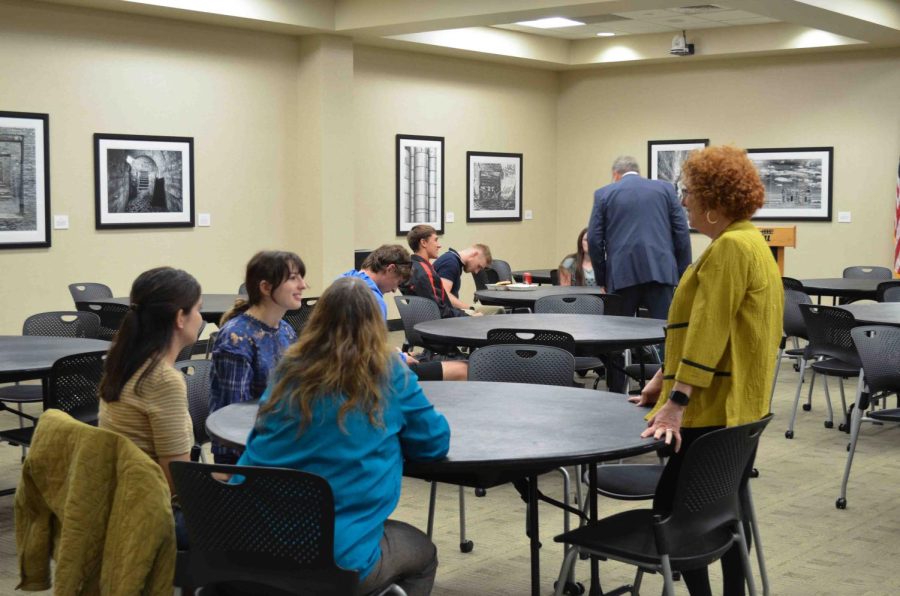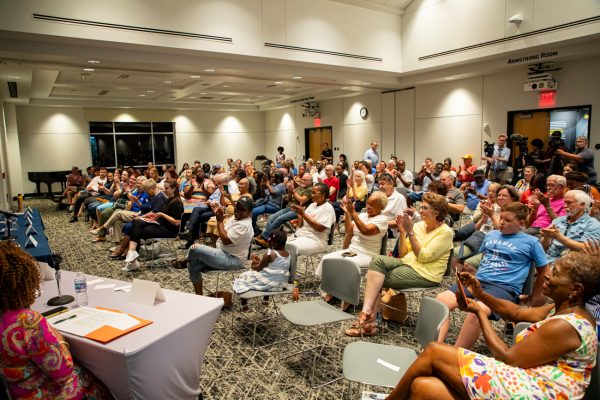‘We’re nerds:’ Kansas Supreme Court Justices describe what they do in a day
Kansas Supreme Court Justice Melissa Standridge converses with students. On Wednesday, Oct. 12, Justice Standridge talked with students studying law and criminal justice before speaking before the audience.
Two members of the Kansas Supreme Court visited Wichita State for a lunch and learn on Wednesday. The justices deemed the judicial branch as the “court of last resort.”
Justices Melissa Standridge and Dan Biles were both elected as Kansas Supreme Court justices through the nonpartisan merit selection process. The justices told students what working at the Judicial Branch is like.
“When you get two justices that disagree, it’s a disagreement on how to interpret the law and sometimes that happens, but you are in there discussing how to interpret the law, and that’s what makes it so intellectually stimulating and challenging,” Standridge said.
Standridge said that she wanted everyone to know that they are real people. Stanridge shared her history as a foster parent as well as her work history.
Biles, an El Dorado native, shared his work experience as a journalist, working full-time while getting his law degree, and fond memories of coming to Wichita as a teenager.
Biles explained that the election process for Kansas Supreme court justices starts with a commission made up of four lay people appointed by the governor and five lawyers who are elected by the bar. They process applications and pick three people to interview in the efforts of taking politics out of the process.
An audience member asked what was one of the most important cases that they had to help decide.
“The hard ones are cases involving children,” Biles said. “You have to be careful if you always want both sides to feel like they got an impartial judge and that their arguments were heard.”
One audience member asked how they deal with unconscious bias. Biles said that in almost all of his cases, he only knows names and not racial profiles.
“We try not to make it unconscious,” Biles said. “We just try hard to recognize that it can be out there.”
Standridge said that lawyers have an obligation of thirteen continuing education hours every year, and that there are over 1000 programs for Kansas attorneys to take to conquer implicit bias.
The justices also described how cases come up from the district court, and usually go through the Court of Appeals before they reach the justices to review. They get 700 to 1000 requests a year and hear cases from late August through the end of May.
The hearings happen in the morning, and then they conference in the afternoon, so that the information is still fresh and they can come to an initial decision. A justice then tries to write the decision the way it was conferenced.
Standridge said that they also have some administrative duties, like serving as a board of directors for the Judicial Branch.
“So basically during the day, we’re either writing or researching, preparing for oral argument,” Biles said. “We’re nerds.”
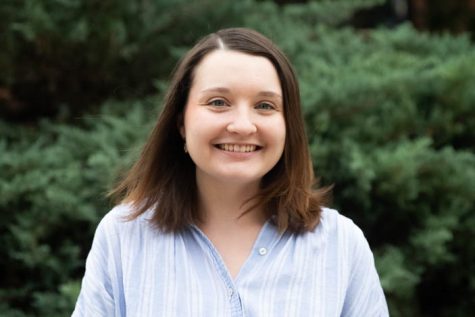
Julia Nightengale was a third-year reporter for The Sunflower, previously working as a Copy Editor and News Editor. Nightengale is a graduate student working...
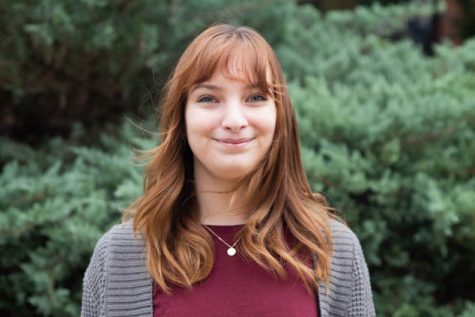
Maegan Vincent was a reporter and photographer for The Sunflower.
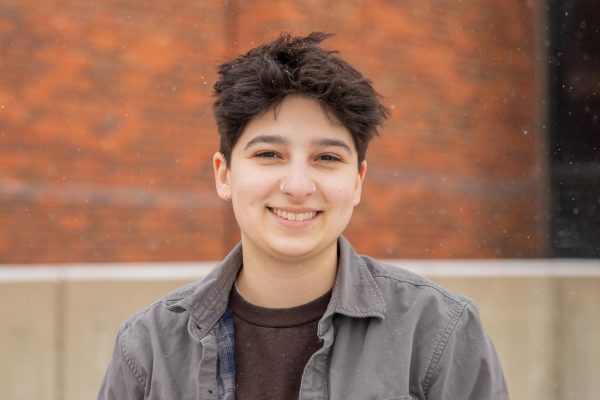
Mia Hennen is the managing editor for The Sunflower. Most recently, Hennen served as editor-in-chief for the 2023-2024 year. A senior English major, Hennen...



